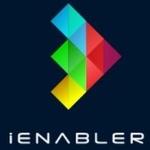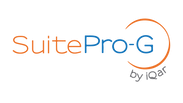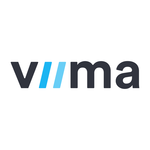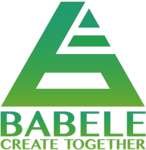Description

iEnabler

Qmarkets
Comprehensive Overview: iEnabler vs Qmarkets
Comprehensive Overview of iEnabler and Qmarkets
a) Primary Functions and Target Markets
iEnabler:
- Primary Functions:
- iEnabler typically focuses on process automation and workflow management within organizations. It serves as a tool to streamline various business operations by automating tasks, facilitating communication, and optimizing internal processes.
- The platform often includes features for task management, project tracking, and collaborative workspaces, aiming to enhance productivity and efficiency in handling repetitive and complex processes.
- Target Markets:
- iEnabler is generally targeted at mid-sized to large enterprises that need robust solutions for process automation and workflow optimization across different industries like manufacturing, finance, healthcare, etc.
Qmarkets:
- Primary Functions:
- Qmarkets is primarily an idea and innovation management platform that enables organizations to crowdsource innovative ideas from employees, customers, and partners.
- The tool provides a structured framework for collecting, evaluating, and implementing innovative ideas, often including gamification elements to encourage participation and engagement. It supports collaboration, decision-making, and project management related to new initiatives.
- Target Markets:
- Qmarkets targets enterprises looking to foster a culture of innovation. This includes industries such as technology, manufacturing, and service sectors where continuous improvement and innovation are crucial.
b) Market Share and User Base
-
iEnabler:
- As of the latest data, iEnabler’s market presence is typically smaller compared to larger, more established software solutions for automation and workflow management. The adoption is more niche and concentrated in sectors that need tailored solutions for process efficiencies.
-
Qmarkets:
- Qmarkets has a prominent share in the innovation management sector, often being recognized as a leader in this niche. Its user base spans globally, with many Fortune 500 companies leveraging its platform to drive innovation.
c) Key Differentiating Factors
-
Focus and Specialization:
- iEnabler is specialized in process efficiency and automation, which addresses operational aspects of organizations. This sets it apart in markets where workflow management is crucial.
- Qmarkets differentiates itself by concentrating on innovation and idea management, which appeals to organizations that prioritize fresh ideas and continuous improvement.
-
Platform Features:
- iEnabler is feature-rich with tools for managing workflows, task automation, and collaboration, suited for companies looking to enhance their operational efficiencies.
- Qmarkets offers unique features like idea crowdsourcing, gamification, and structured evaluation processes which are specifically designed to drive engagement and innovation.
-
Market Perception and Use Cases:
- iEnabler is perceived as a practical solution for process management, often being used in environments that require detailed operational improvements and redundancies.
- Qmarkets is viewed as a leader in fostering innovation cultures, and its use cases often revolve around strategic growth and innovation goals.
Summary: While iEnabler and Qmarkets both serve enterprise markets, their core functionalities, target audiences, and unique selling propositions differ substantially. iEnabler centers around operational efficiency through automation, while Qmarkets focuses on harnessing innovation through collaborative idea management. Each caters to distinct organizational priorities and objectives within their respective domains.
Contact Info

Year founded :
Not Available
Not Available
Not Available
Not Available
Not Available

Year founded :
2006
+972 3-757-3700
Not Available
United States
http://www.linkedin.com/company/qmarkets
Feature Similarity Breakdown: iEnabler, Qmarkets
To provide an informative feature similarity breakdown for iEnabler and Qmarkets, let's explore their shared core features, compare their user interfaces, and examine any unique features each product may offer.
a) Core Features in Common:
-
Idea Submission and Management:
- Both iEnabler and Qmarkets allow users to submit, categorize, and manage ideas effectively. This includes features for idea evaluation and prioritization.
-
Collaboration Tools:
- Both platforms offer tools for collaboration, such as commenting, voting, and discussion forums, which help in refining and improving ideas through collective input.
-
Workflow and Approval Processes:
- They support workflow automation to manage the lifecycle of ideas from submission through evaluation, approval, and implementation.
-
Customizable Templates and Campaigns:
- Both solutions offer the flexibility to customize idea submission templates and run dedicated innovation campaigns to focus on specific business objectives.
-
Analytics and Reporting:
- Each provides analytics and reporting tools to assess the performance and impact of innovation initiatives, including metrics on idea quality, participation rates, and ROI.
b) User Interface Comparison:
-
iEnabler:
- Known for its straightforward and functional interface, which prioritizes ease of use. The design is often described as streamlined, focusing on providing users with quick access to key features without overwhelming them with options.
-
Qmarkets:
- Tends to offer a more visually engaging and dynamic interface with customizable dashboards. It often emphasizes user engagement through interactive elements and a polished design to enhance the user experience.
While both interfaces strive for usability, Qmarkets typically offers more customization options, allowing companies to tailor their user interface to better fit their branding and specific needs.
c) Unique Features:
-
iEnabler Unique Features:
- Simplified Configuration: Designed for ease of deployment, it allows businesses to set up their innovation management process with minimal technical configuration.
- Integration Capabilities: It often provides seamless integration with enterprise systems like ERP and CRM, facilitating a more holistic approach to innovation management across the organization.
-
Qmarkets Unique Features:
- Gamification Elements: Qmarkets often includes gamification features to enhance user engagement by rewarding participation and idea contribution.
- Advanced Idea Evaluation Tools: Offers sophisticated tools for evaluating ideas, such as multi-criteria decision analysis and scenario simulation, which are particularly useful for organizations with complex evaluation needs.
- Community Building Features: Capabilities to create and manage innovation communities or hubs, fostering a sense of community among participants.
Conclusion:
While both iEnabler and Qmarkets share many core features essential for idea and innovation management, they differentiate themselves in user experience and specific functionalities that cater to different organizational needs. The choice between them would depend on factors such as desired user interface aesthetics, specific feature requirements, and integration needs within your organization's ecosystem.
Features

Not Available

Not Available
Best Fit Use Cases: iEnabler, Qmarkets
iEnabler and Qmarkets are both platforms designed to facilitate innovation management and idea collaboration within organizations, but they cater to slightly different needs and use cases. Here's a breakdown of their best fit use cases:
a) iEnabler
Best Fit Use Cases:
-
Small to Medium Enterprises (SMEs):
- iEnabler is well-suited for SMEs looking to streamline their idea generation process without the complexity of larger systems. These businesses can benefit from a straightforward, user-friendly platform that encourages employee participation.
-
Startups and Entrepreneurial Ventures:
- Startups can leverage iEnabler to harness the creativity of their small teams. The platform aids in organizing, prioritizing, and implementing innovative ideas critical for growth and competitive advantage.
-
Internal Project Innovation:
- If a company is focused on internal process improvements or product development projects, iEnabler can offer a manageable environment to gather and evaluate employee ideas.
-
Employee Engagement Initiatives:
- Organizations aiming to boost morale and engagement through active participation in the company’s innovation journey might find iEnabler’s simplicity and inclusivity advantageous.
b) Qmarkets
Preferred Use Cases:
-
Large Corporations and Enterprises:
- Qmarkets is designed to handle the sophisticated needs of large organizations with its scalable, robust platform that can accommodate a high volume of ideas and complex evaluation processes.
-
Open Innovation and Crowdsourcing:
- Companies seeking to reach beyond internal resources and tap into external networks, including customers, partners, or the public, will find Qmarkets suitable due to its ability to manage large-scale idea challenges and campaigns.
-
Global Operations and Multinational Projects:
- For businesses with international operations, Qmarkets provides the tools necessary for collaboration across different regions and departments, supporting multi-language and multi-currency capabilities.
-
Comprehensive Innovation Programs:
- Organizations with mature innovation strategies that require detailed analytics, reporting, and advanced customization can benefit from Qmarkets' diverse functionalities and integrative capabilities.
c) Catering to Different Industry Verticals or Company Sizes
-
Industry Verticals:
- Both iEnabler and Qmarkets can be adapted for various industries, from manufacturing and healthcare to finance and technology. However, Qmarkets, with its advanced features, is often better suited for highly regulated industries which require more structured and secure processes.
-
Company Sizes:
- iEnabler is typically more appropriate for small to medium-sized companies or startups that need an easy-to-use solution to begin their innovation journey. The platform’s simplicity helps these companies implement and manage innovation without significant resource investment.
- Qmarkets, on the other hand, is ideal for medium to large enterprises that need a scalable and feature-rich solution capable of supporting complex innovation efforts across various departments and geographical locations.
In conclusion, while iEnabler is optimal for smaller, more focused internal innovation efforts, Qmarkets is suited for expansive, strategic innovation initiatives requiring extensive features and scalability. Each platform has its strengths, tailored to the size and scope of the organization’s innovation needs.
Pricing

Pricing Not Available

Pricing Not Available
Metrics History
Metrics History
Comparing teamSize across companies
Conclusion & Final Verdict: iEnabler vs Qmarkets
To provide a conclusion and a final verdict for iEnabler and Qmarkets, it's essential to evaluate both products in terms of their overall value, considering features, pricing, scalability, user-friendliness, support, and customer feedback.
Conclusion:
a) Considering all factors, which product offers the best overall value?
Overall, both iEnabler and Qmarkets have solid offerings in the innovation management software space, but Qmarkets tends to provide the best overall value for organizations looking for a comprehensive and scalable solution. Qmarkets excels in robust features, customization options, and a strong support network, making it suitable for larger enterprises or those needing a versatile platform.
b) Pros and cons of choosing each product:
-
iEnabler
- Pros:
- User-Friendly Interface: iEnabler is known for its intuitive and easy-to-use interface, which can reduce the learning curve for new users.
- Cost-Effective: It may be a more budget-friendly option for small to medium-sized enterprises.
- Specific Features: iEnabler might have certain niche features that cater specifically to specific industries or business models.
- Cons:
- Limited Scalability: As businesses grow, iEnabler might not scale as effectively, potentially necessitating a transition to a more robust platform.
- Customization: There might be limited opportunities for customization compared to more established competitors like Qmarkets.
- Pros:
-
Qmarkets
- Pros:
- Comprehensive Features: Qmarkets provides a wide array of features that are suitable for managing various aspects of innovation.
- High Customizability: Offers extensive customization options and integration capabilities with other business systems.
- Strong Support: Known for excellent technical support and a dedicated customer success team.
- Cons:
- Pricing: May be on the higher end of the pricing spectrum, which might not be ideal for very small businesses or startups.
- Complexity: The comprehensive nature of Qmarkets can imply a steeper learning curve for some users or teams.
- Pros:
c) Specific recommendations for users trying to decide between iEnabler vs Qmarkets:
-
Assess Your Needs: Companies should first clearly assess their specific needs, including the number of users, desired features, and growth expectations. If your organization requires basic features and a straightforward, cost-effective solution, iEnabler may be sufficient.
-
Consider Scalability and Customization: Organizations anticipating significant growth or requiring extensive customization should lean towards Qmarkets, as it is better equipped to handle complex needs and a growing user base.
-
Evaluate Budget Constraints: Evaluate your budgetary constraints. If cost is a primary concern and advanced features are not necessary, iEnabler might deliver adequate value.
-
Request Demos and Trials: Whenever possible, utilize trial periods or request product demos to experience the platforms firsthand. This will provide a better understanding of how each product performs in real-world scenarios related to your specific business context.
-
Read Customer Reviews: Consider peer reviews and industry-specific feedback, as experiences from similar businesses can offer valuable insights into choosing the most suitable solution.
In conclusion, the choice between iEnabler and Qmarkets should be guided by the specific needs, budget, and strategic goals of the organization, with Qmarkets emerging as the preferred choice for larger-scale and feature-rich implementations.
Add to compare
Add similar companies




